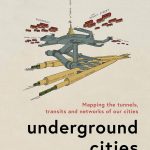Disclosure : This site contains affiliate links to products. We may receive a commission for purchases made through these links.
Imaginary Cities

Inspired by the surreal accounts of the explorer and `man of a million lies` Marco Polo, Imaginary Cities charts the metropolis and the imagination, and the symbiosis therein. A work of creative nonfiction, the book roams through space, time and possibility, mapping cities of sound, melancholia and the afterlife, where time runs backwards or which float among the clouds. In doing so, Imaginary Cities seeks to move beyond the cliches of psychogeography and hauntology, to not simply revisit the urban past, or our relationship with it, but to invade and reinvent it. Following in the lineage of Borges, Calvino, Chris Marker and Kenneth White, the book examines the city from global macrocosm to the microcosm of its inhabitants` perspectives. It proceeds through opium dreams, sea voyages, the hallucinations of prisoners, nocturnal decadence, impossible Soviet skyscrapers, marauding golems, subterranean civilisations, apocalyptic prophecies and the work of architectural visionaries such as Antonio Sant`Elia, Archigram and Buckminster Fuller. It rethinks the ideas of utopias and dystopias, urban exploration, alienation and resistance.It claims that the Situationists lacked ambition when they suggested, โ€Beneath the paving stones, the beach.โ€ Instead, beneath the paving stones, we may just be able to discern the entire universe. Imaginary Cities demonstrates that each city dreamt up by artists, writers, architects and lunatics has a real-life equivalent and that the great Marco Polo was no liar. Imaginary Cities need not simply exist in fiction or the mind. We already inhabit them.




































































